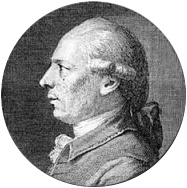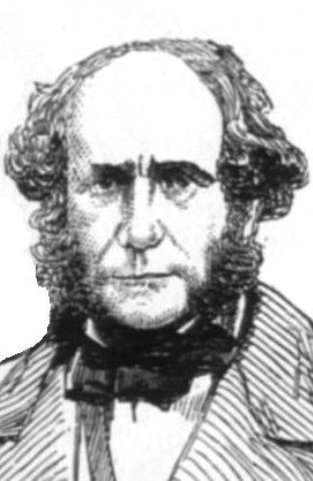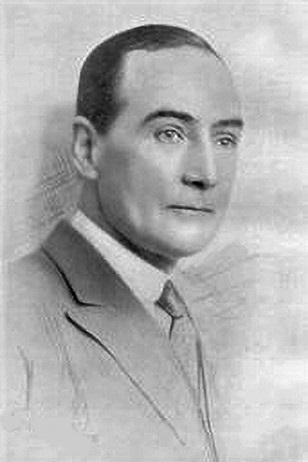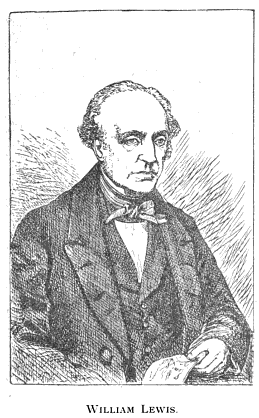
Chess is a board game for two players. It is sometimes called international chess or Western chess to distinguish it from related games such as xiangqi and shogi.

The queen is the most powerful piece in the game of chess. It can move any number of squares vertically, horizontally or diagonally, combining the powers of the rook and bishop. Each player starts the game with one queen, placed in the middle of the first rank next to the king. Because the queen is the strongest piece, a pawn is promoted to a queen in the vast majority of cases.

Harold James Ruthven Murray was a British educationalist, inspector of schools, and prominent chess historian. His book, A History of Chess, is widely regarded as the most authoritative and comprehensive history of the game.

François-André Danican Philidor, often referred to as André Danican Philidor during his lifetime, was a French composer and chess player. He contributed to the early development of the opéra comique. He is widely regarded as the best chess player of his age; his book Analyse du jeu des Échecs was considered a standard chess manual for at least a century. A well-known chess opening, an endgame position, and a checkmate method are all named after him.

Howard Staunton was an English chess master who is generally regarded as the world's strongest player from 1843 to 1851, largely as a result of his 1843 victory over Pierre Charles Fournier de Saint-Amant. He promoted a chess set of clearly distinguishable pieces of standardised shape – the Staunton pattern promulgated by Nathaniel Cooke – that is still the style required for competitions. He was the principal organiser of the first international chess tournament in 1851, which made England the world's leading chess centre and caused Adolf Anderssen to be recognised as the world's strongest player.
Capablanca chess is a chess variant invented in the 1920s by World Chess Champion José Raúl Capablanca. It incorporates two new pieces and is played on a 10×8 board. Capablanca believed that chess would be played out in a few decades. This threat of "draw death" for chess was his main motivation for creating a more complex version of the game.
Stalemate is a situation in chess where the player whose turn it is to move is not in check and has no legal move. Stalemate results in a draw. During the endgame, stalemate is a resource that can enable the player with the inferior position to draw the game rather than lose. In more complex positions, stalemate is much rarer, usually taking the form of a swindle that succeeds only if the superior side is inattentive. Stalemate is also a common theme in endgame studies and other chess problems.

The Mechanical Turk, also known as the Automaton Chess Player, or simply The Turk, was a fraudulent chess-playing machine constructed in 1770, which appeared to be able to play a strong game of chess against a human opponent. For 84 years, it was exhibited on tours by various owners as an automaton. The machine survived and continued giving occasional exhibitions until 1854, when a fire swept through the museum where it was kept, destroying the machine. Afterwards, articles were published by a son of the machine's owner revealing its secrets to the public: that it was an elaborate hoax, suspected by some, but never proven in public while it still existed.
In chess, fool's mate is the checkmate delivered after the fewest possible moves from the game's starting position. It arises from the following moves, or similar:
In chess, scholar's mate is the checkmate achieved by the following moves, or similar:

In chess, en passant describes the capture by a pawn of an enemy pawn on the same rank and an adjacent file that has just made an initial two-square advance. This is a special case in the rules of chess. The capturing pawn moves to the square that the enemy pawn passed over, as if the enemy pawn had advanced only one square. The rule ensures that a pawn cannot use its two-square move to safely skip past an enemy pawn.

Richard Selig Réti was an Austro-Hungarian, later Czechoslovak, chess player, chess author, and composer of endgame studies.
The Amar Opening is a chess opening defined by the move:
The Trompowsky Attack is a chess opening that begins with the moves:

El Ajedrecista is an automaton built in 1912 by Leonardo Torres Quevedo in Madrid, a pioneering autonomous machine capable of playing chess. As opposed to the human-operated Mechanical Turk and Ajeeb, El Ajedrecista had a true integrated automation built to play chess without human guidance. It played an endgame with three chess pieces, automatically moving a white king and a rook to checkmate the black king moved by a human opponent.

Hugh Alexander Kennedy was an English chess master and writer.

Philip Walsingham Sergeant was a British professional writer on chess and popular historical subjects. He collaborated on the fifth (1933), sixth (1939), and seventh (1946) editions of Modern Chess Openings, an important reference work on the chess openings. He also wrote biographical game collections of Paul Morphy, Rudolf Charousek, and Harry Nelson Pillsbury, and other important books such as A Century of British Chess (1934) and Championship Chess (1938).

Jacques François Mouret (1780–1837) was a French chess master of the early 19th century who became chess tutor of the future Louis Philippe I and was one of the most successful operators of The Turk, a famous chess-playing automaton.

William Lewis (1787–1870) was an English chess player and author, best known for the Lewis Countergambit. He may have been the first player ever described as a Grandmaster of the game.













